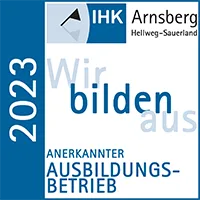Injection Moulding
Injection Moulding
Modern machinery for best quality
Injection moulding is the most commonly used process for the mass production of plastic parts. However, it is also suitable for the production of small series or prototypes.
At H+K we manufacture plastic parts weighing up to 3,500 grams on a total of 57 injection moulding machines with locking forces of up to 500 tonnes.
Our modern machinery is connected by an MES system and is monitored via control centre technology. This ensures the precise execution of customer requirements and compliance with quality standards at all times.

Insert moulding
Metal parts that have to withstand particularly high stresses are often extrusion-coated with high-technology special polymers or other high-tech materials. This mainly concerns spindles, rollers and cylinders, but also other inserts for automotive suppliers or mechanical engineering.
Micro injection moulding
Miniature parts require special processes so that they can be manufactured economically and with minimum use of resources.
The “BOY XS” is a special machine for micro injection moulding that completes our machine park. With this machine, we are able to produce even the smallest precision parts of the highest quality for our customers.
To increase the durability of even the finest parts, high-performance plastics such as PEEK can be used. Of course, all common engineering thermoplastics are also suitable.
Injection Moulding Machines
A suitable machine must be defined for each injection-moulded part for the component to be produced in a qualitative and economically optimal manner.
Here, the most important characteristic is the clamping force, which is specified in kilonewtons (kN) or colloquially referred to as tonnes (10 kN correspond to approximately a weight of 1 tonne). The clamping force ensures that the injection mould remains closed during the injection phase and the holding pressure phase and prevents the forming of flash or fluctuations in thickness of the article. A decisive factor for the determination of the required clamping force are the projected surface of the article (in the direction of demoulding) and the pressure of the plastic melt in the mould. The largest injection moulding machine at H+K has a clamping force of 500 tonnes. The maximum projected surface approximately corresponds to the size of a sheet of A4 paper, under optimal conditions even A3.
An additional characteristic is the size of the injection unit. The injection unit must be capable of melting the required amount of plastic granulate and to build up sufficient pressure to be able to fill the mould with the melt. Then again, the volume of the injection unit may not be too large, as the melt could otherwise be damaged thermally. For a performance that is always optimal, we have machines with differently dimensioned injection units, also within a machine group. Article weights between a maximum of 3,500 g and down to 0.1 g can be realised with this (see also: Micro injection moulding).




